Forget Steak: Your Real-World Guide to High-Protein Veggies & Legumes
I’ve spent a huge chunk of my life around food, first in the chaos of professional kitchens and later helping regular folks figure out nutrition. And if there’s one thing I’ve learned, it’s that most people are sleeping on the powerhouse world of plant-based protein. We’re trained to think protein means a slab of meat on a plate, but some of the most powerful, flavorful, and budget-friendly ingredients are hiding in plain sight in the produce and pantry aisles.
In this article
This isn’t just a list of vegetables. I want to pull back the curtain and show you how chefs and nutrition pros actually think about and use these ingredients. We’ll get into the simple science that matters, the cooking techniques that make a real difference, and the little secrets that turn good meals into great ones. Think of this as me sharing all the stuff I learned through trial and (lots of) error. My goal? For you to walk away feeling totally confident about making these foods a staple in your kitchen.
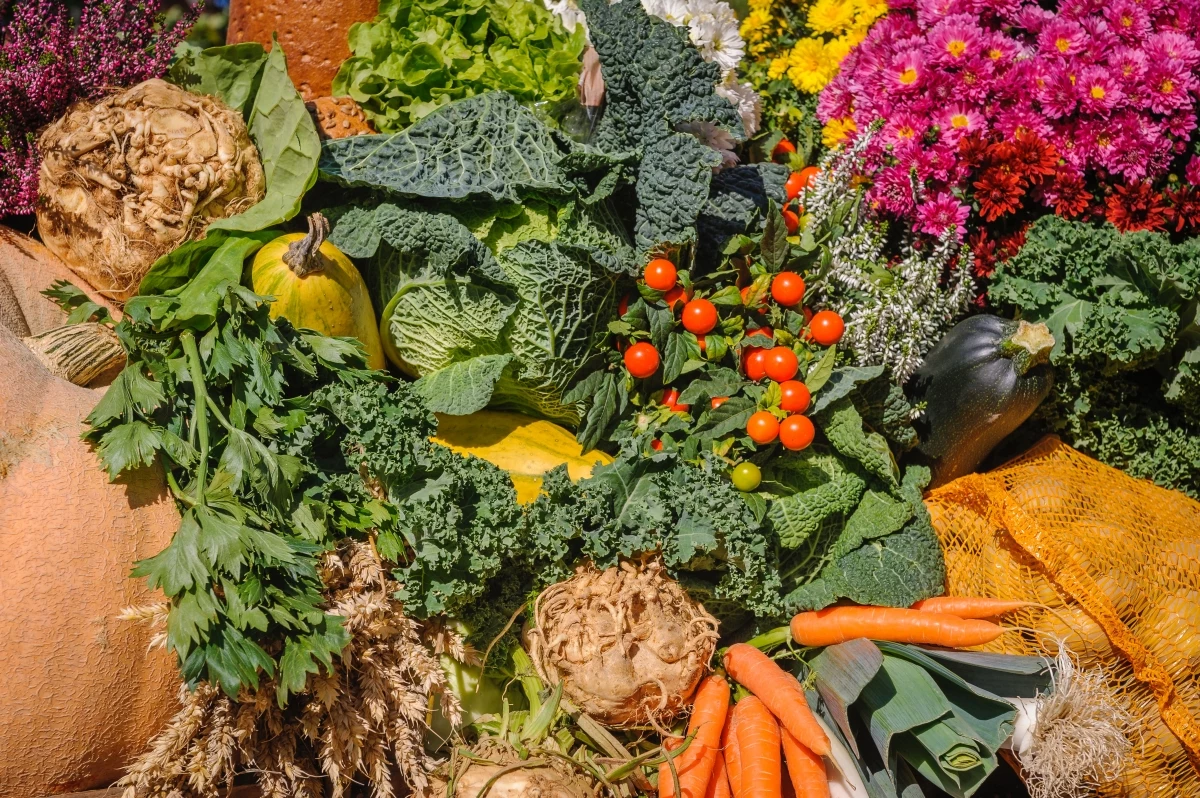
First, Let’s Talk About What Plant Protein Actually Is
Before we start chopping and cooking, let’s get on the same page. I promise, this is the only “science-y” part, and it’s actually pretty straightforward.
Basically, all protein is made from little building blocks called amino acids. Your body needs a bunch of them, but there are nine—the “essential” ones—that it can’t make on its own. You have to get them from food. When a food has all nine in the right amounts, it’s called a “complete protein.” Meat, dairy, and eggs fall into this category, which is why they get all the protein glory.
Most plants, on the other hand, are “incomplete proteins,” meaning they’re a bit low in one or two of those essential nine. For example, beans are often low in an amino acid called methionine, while rice is low in another called lysine. But here’s the cool part: your body is way smarter than we used to give it credit for. It keeps a little pool of amino acids on standby. So as long as you eat a good variety of plant foods throughout the day—not even in the same meal!—your body can grab what it needs to build complete proteins. That classic rice and beans combo? It’s a perfect nutritional team-up people figured out ages ago.
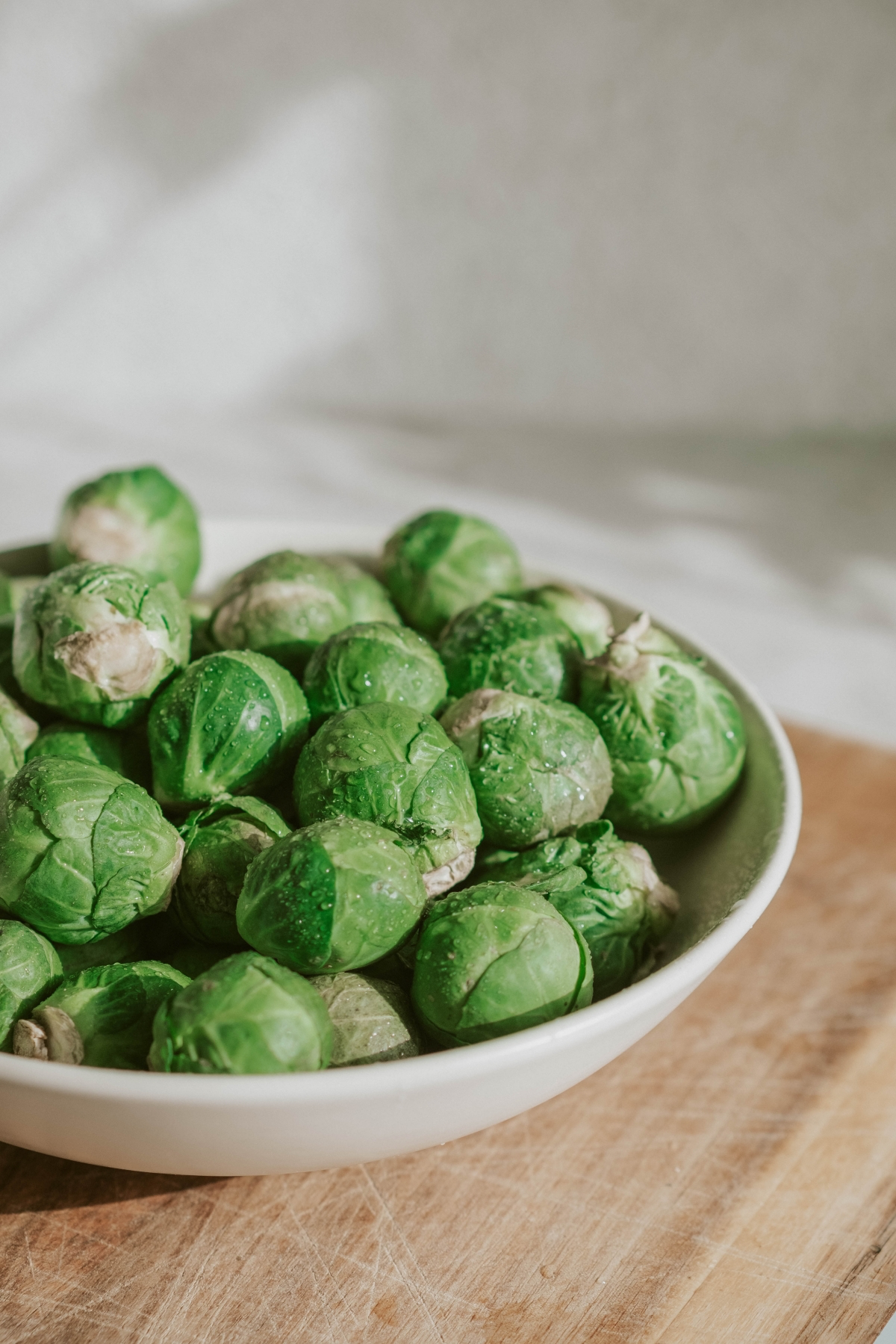
Oh yeah, one more thing the pros talk about is “bioavailability.” It just means how much of the protein your body can actually absorb. Plant proteins can be a little harder to digest because of fiber and other natural compounds. But guess what? Cooking, soaking, and sprouting are like cheat codes. These simple kitchen techniques break down those compounds and make the protein much easier for your body to use.
The Legume Lineup: Your Protein Foundation
Legumes are the undisputed champions of the plant protein world. They’re not technically vegetables, but in my kitchen, they’re the bedrock of countless healthy, satisfying meals. Knowing how to handle them is key.
Lentils: The Speedy Workhorse
I’m convinced I’ve cooked my body weight in lentils ten times over. They are an absolute workhorse. They’re dirt-cheap, cook up fast, and a single cooked cup packs about 18 grams of protein. A one-pound bag usually costs between $2 and $4 and makes a massive amount of food, making it one of the most economical protein sources on the planet.
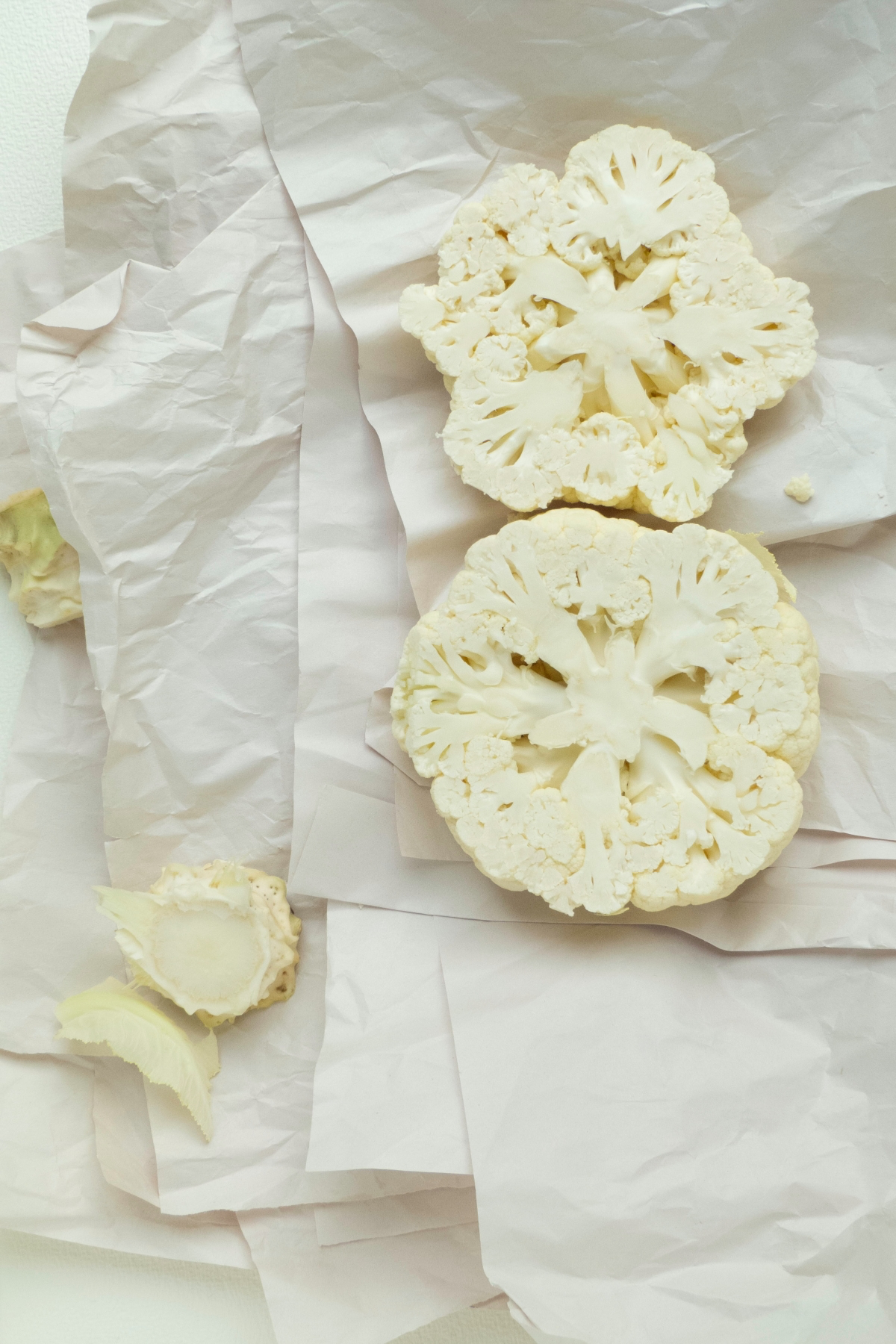
- Know Your Type: This is crucial. Brown and green lentils (especially the fancy French green ones) are firm and hold their shape, making them perfect for salads and side dishes. Red and yellow lentils, however, completely melt away, which is exactly what you want for thickening a creamy soup or a traditional Indian dal.
- Cooking Them Right: Always give your lentils a quick rinse and a look-over for any tiny pebbles (it happens!). For brown or green lentils, the key is a gentle simmer. A common mistake is boiling them aggressively, which turns them to mush. Trust me, I’ve turned expensive lentils into a sad, brown paste more times than I care to admit because I got distracted. Set a timer! I use a 3-to-1 ratio of water to lentils and start checking for tenderness after 15-20 minutes. Pro tip: Add salt at the very end of cooking. Salting at the beginning can make the skins tough.
- Instant Pot / Pressure Cooker Hack: For those in a hurry, a pressure cooker is your best friend. Brown or green lentils usually take about 8-10 minutes on high pressure with a natural release. Red lentils? Just 2-3 minutes. It’s a game-changer for weeknight meals.
- My Go-To 5-Minute Lentil Salad: Mix one cup of cooked brown lentils with a diced cucumber, a handful of cherry tomatoes, some chopped parsley, and a simple lemon-and-olive-oil dressing. Done.
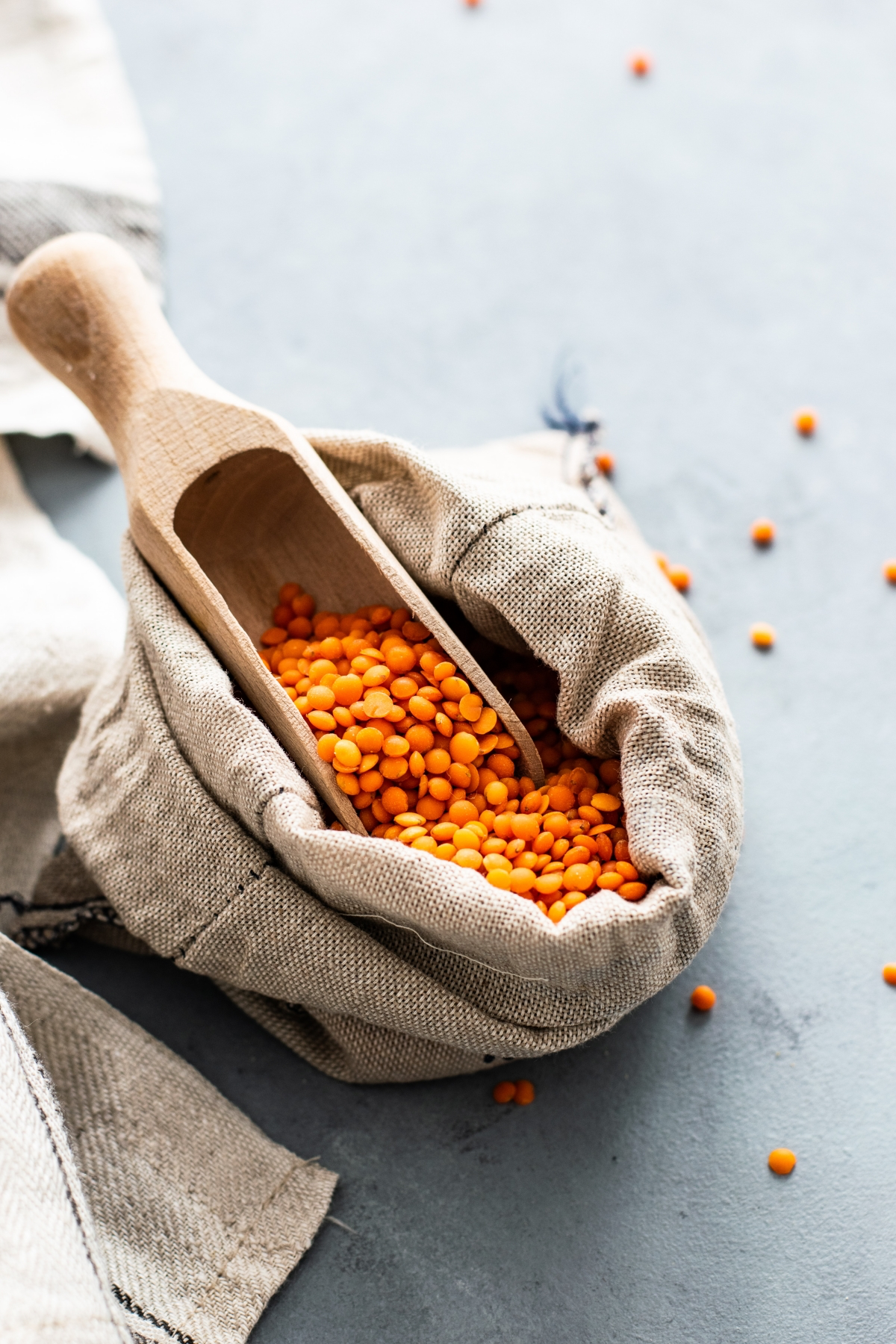
Chickpeas: More Than Just Hummus
A cooked cup of chickpeas (also called garbanzo beans) gives you around 15 grams of protein. I always have both canned and dried chickpeas in my pantry. Canned are great for tossing into a quick salad, but for truly next-level hummus, you have to start with dried. Good to know: A cup of cooked chickpeas is roughly equivalent to a half-cup of dried ones.
- The Secret to Silky Hummus: Want that incredibly smooth, creamy hummus you get at good restaurants? Here’s the method. First, soak your dried chickpeas overnight with a half-teaspoon of baking soda to soften the skins. Then, cook them until they are very tender. The real pro move is to then peel the skins off. It sounds tedious, but rubbing them between your hands in a bowl of cold water makes it go faster. For those who (understandably) don’t have time for that, my shortcut is to blend the chickpeas while they’re still warm with a splash of the cooking liquid in a high-powered blender.
- Don’t Ditch the Can Water! That liquid in the can of chickpeas? It’s called aquafaba, and it’s a mind-blowing vegan substitute for egg whites. You can whip it up to make meringues, fluffy mousse, or even cocktails. It’s a fantastic way to reduce food waste.
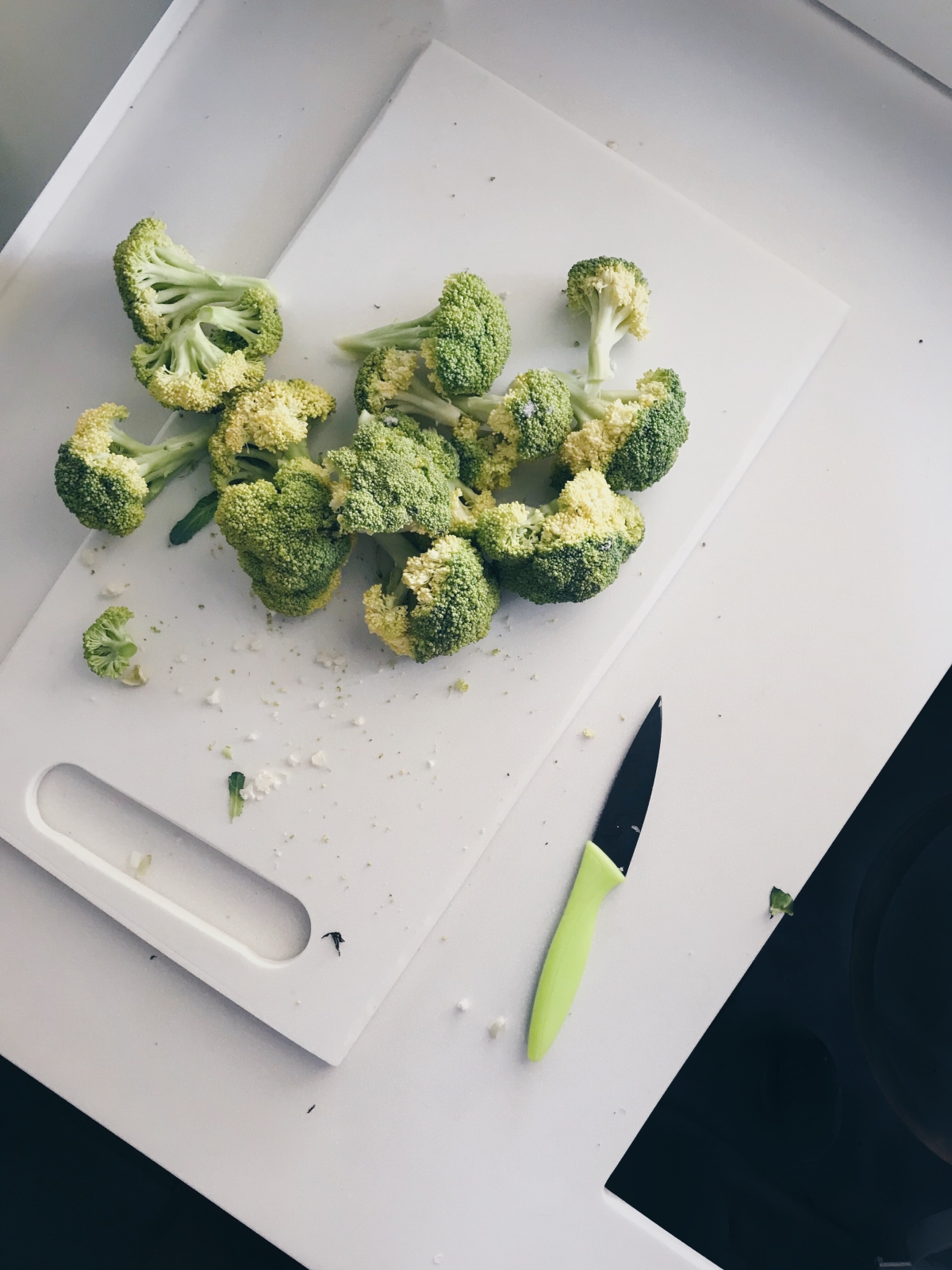
Edamame: The Complete Protein Power-Up
Edamame (which are just young soybeans) are special because they’re a rare plant-based source of complete protein. A cup of the shelled beans has about 18 grams of protein. I almost always buy it frozen from the freezer aisle at my local grocery store—it’s just as good as fresh and way more convenient.
- The Best Way to Cook It: Please, don’t boil your edamame into a watery mess. Steaming is the way to go. It only takes about 5-6 minutes. Once they’re done, toss them in a bowl with a generous pinch of coarse sea salt. The crunchy salt on the pods is part of the experience!
- A Quick Note on Soy: People love to debate soy. In my experience, whole food sources of soy like edamame, tofu, and tempeh are great for most people. The health concerns you hear about are usually tied to the super-processed soy powders and additives, not the whole bean.
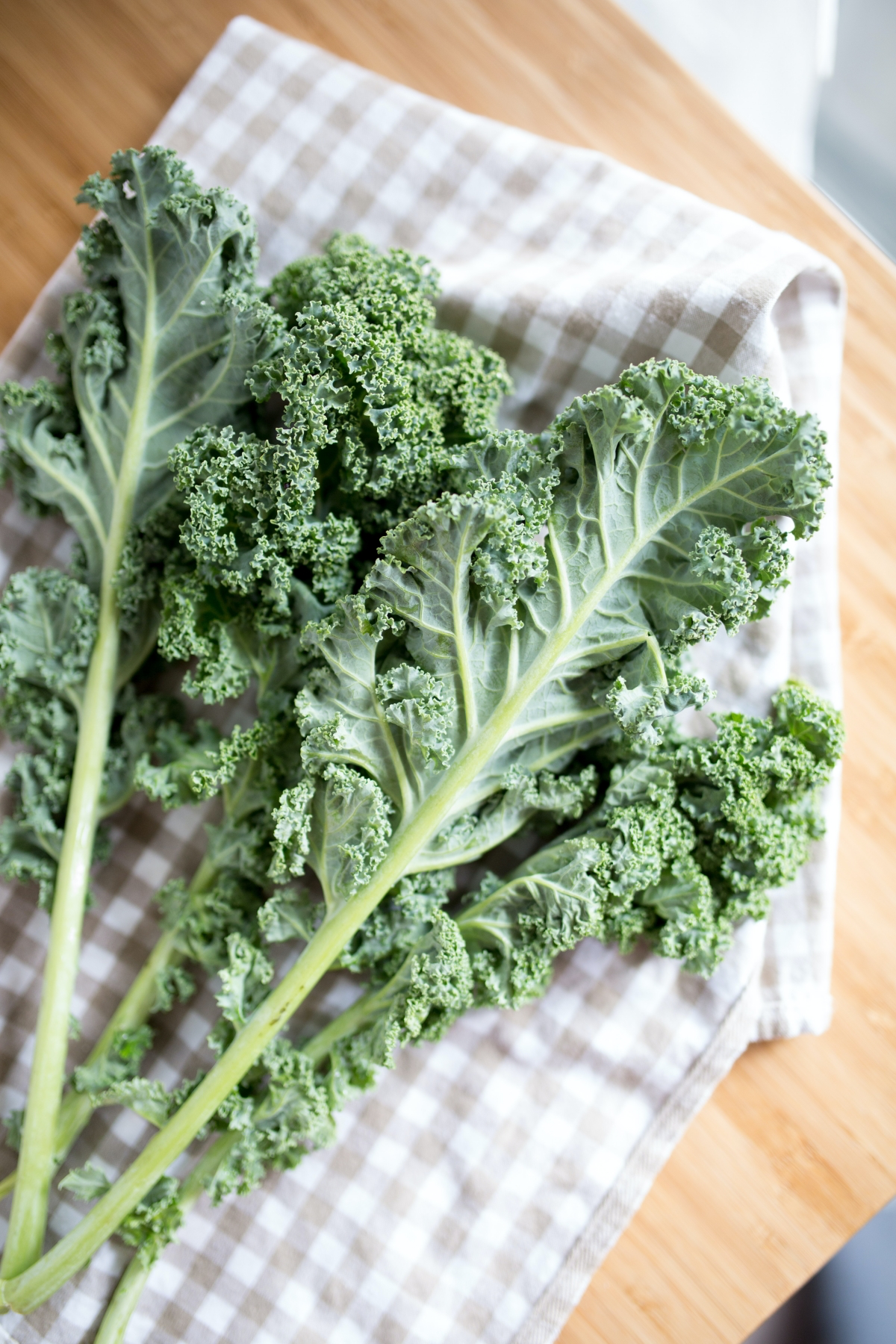
The Unsung Heroes: High-Protein Vegetables
While they don’t have the knockout numbers of legumes, a few common vegetables add a very respectable protein boost to any meal. Think of them as the supporting cast that makes the whole show better.
Green Peas: Small but Mighty
A single cup of green peas has around 8 grams of protein—that’s more than a large egg! I’m a huge fan of frozen peas; they’re picked and frozen at their peak, so they often have more nutrients than the “fresh” ones that have been sitting on a truck for days. To keep them bright green and delicious, just blanch them in boiling water for 60-90 seconds, then immediately drain and rinse with cold water. This locks in the color and prevents them from getting mushy.
Spinach: The King of Concentration
Here’s a fun fact: a cup of cooked spinach has about 5 grams of protein. It takes a mountain of raw spinach to cook down to a cup, which is why the nutrients get so concentrated. But spinach holds a ton of water. The most important step after cooking it is to squeeze out all that excess liquid. I put it in a strainer and press down hard with a spoon. If you skip this, your final dish will be a watery, flavorless mess.
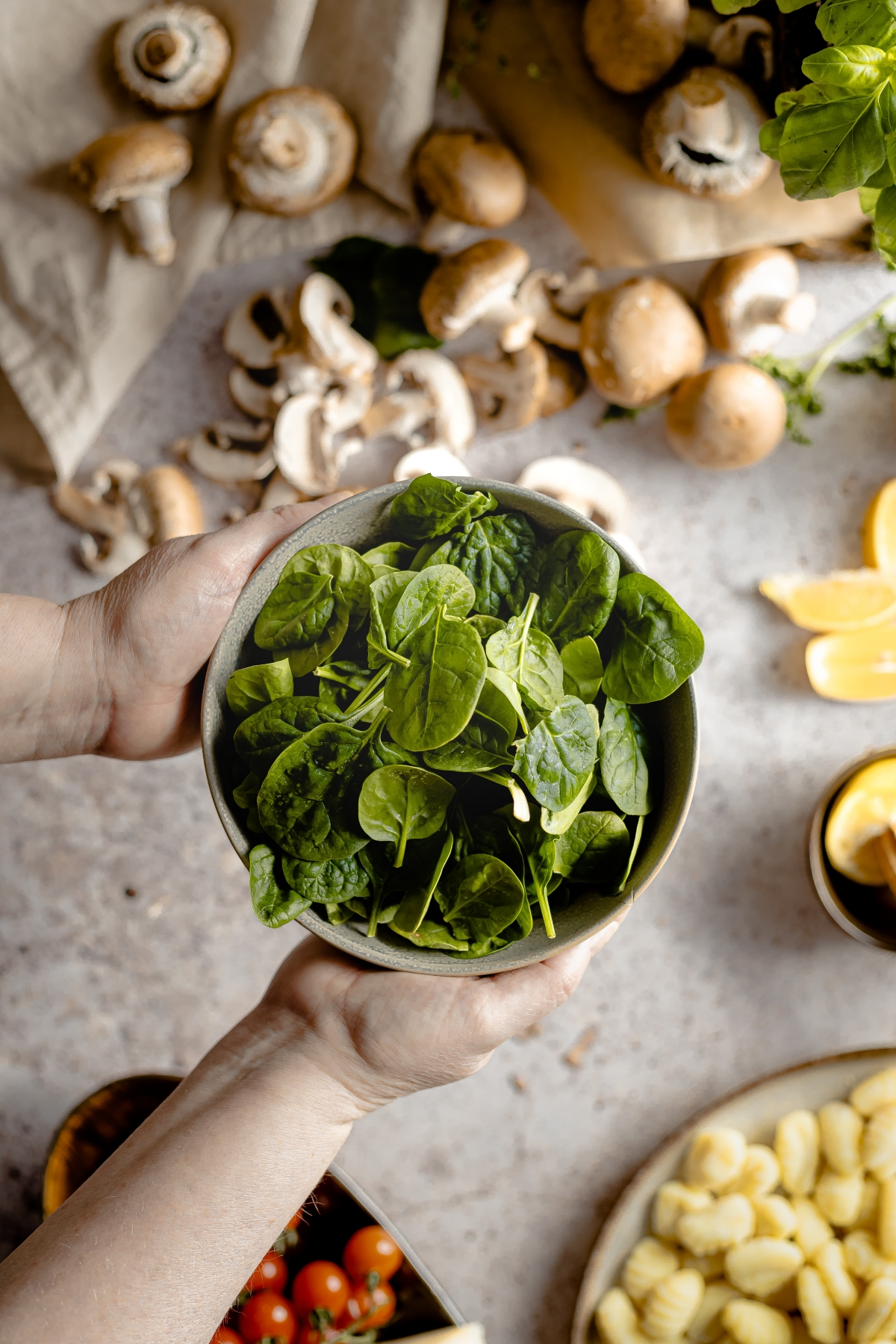
Mushrooms: The Umami Bomb
Mushrooms only offer about 3-4 grams of protein per cup, but their real magic is their savory, meaty flavor, called umami. This makes them a fantastic stand-in for meat. The number one rule? Don’t drown them in water to clean them. Just wipe them with a damp paper towel. To get a perfect golden-brown sear, start them in a hot, dry pan. Let them release their water, and once that water has evaporated, then add your oil or butter. This two-step process guarantees browned, not steamed, mushrooms every time.
Broccoli & Brussels Sprouts: The Roasting Champions
These cruciferous veggies give you about 4 grams of protein per cooked cup. Forget boiling them. The absolute best way to cook them is high-heat roasting. Toss them with olive oil and salt, and roast them at 400°F (about 200°C) until they’re tender and the edges are caramelized and nutty. And please, don’t throw out the broccoli stem! Just peel the tough outer skin, slice it up, and roast it right alongside the florets. It’s delicious and a great way to use the whole plant.
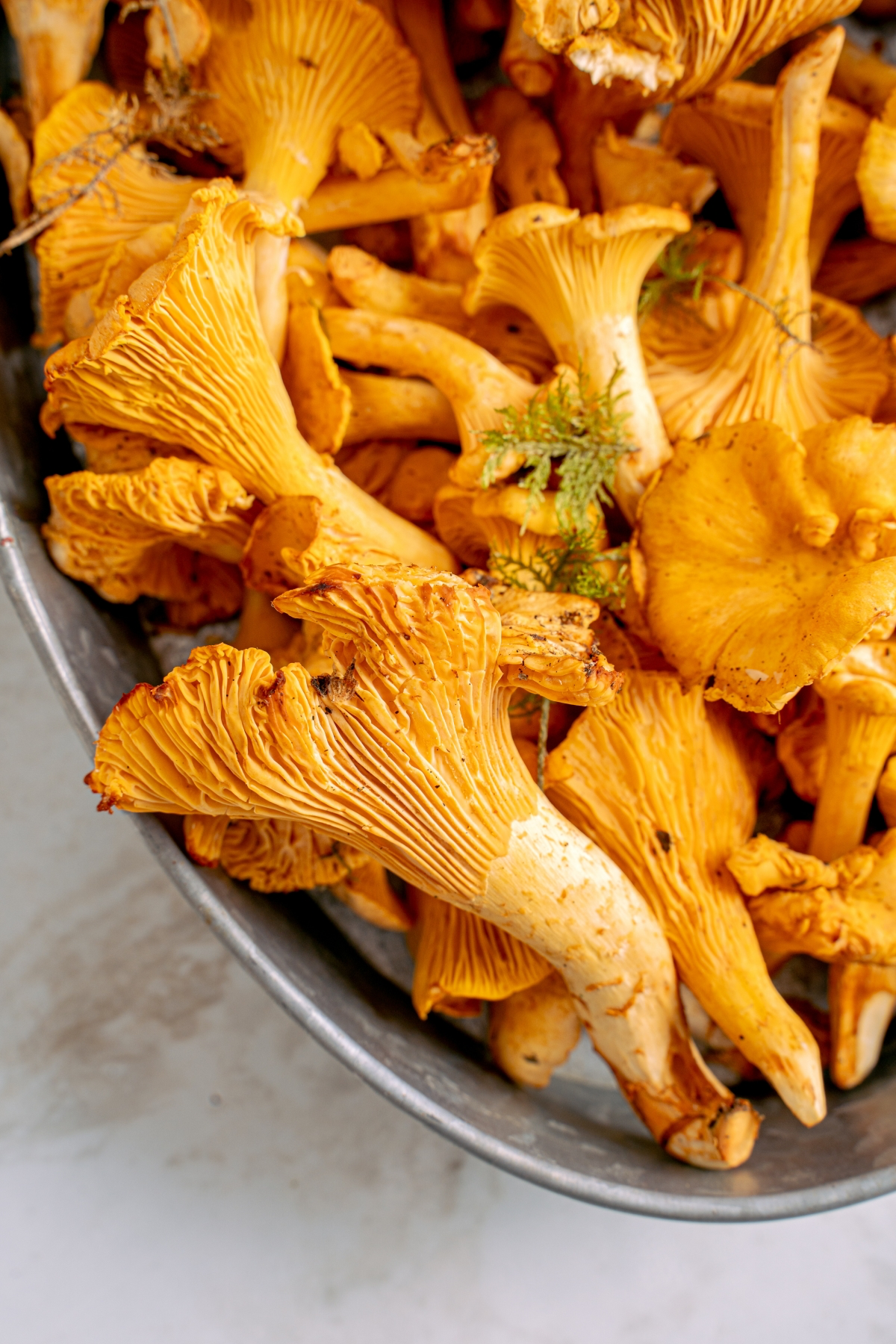
Putting It All Together: Your Weekly Game Plan
Knowing the ingredients is great, but the real secret to eating well is being prepared. Here’s a simple plan I give to clients, what I call the “Sunday Power Hour.”
Spend one hour on the weekend prepping these basics:
- Cook a Grain: Make a big batch of quinoa or brown rice. Two cups of dry quinoa will yield about 6 cups cooked.
- Cook a Legume: Cook 1.5 cups of dry lentils or chickpeas. This will give you about 4 cups, ready to go.
- Roast Some Veggies: Chop up a large head of broccoli and a few carrots. Roast them until tender.
- Make a Dressing: Whisk together a simple vinaigrette in a jar.
Store everything in airtight containers in the fridge (they’ll last up to 4 days). With these components ready, you can throw together a high-protein grain bowl, a hearty salad, or a quick soup in minutes. It’s the single best trick for avoiding takeout on a busy Tuesday night.
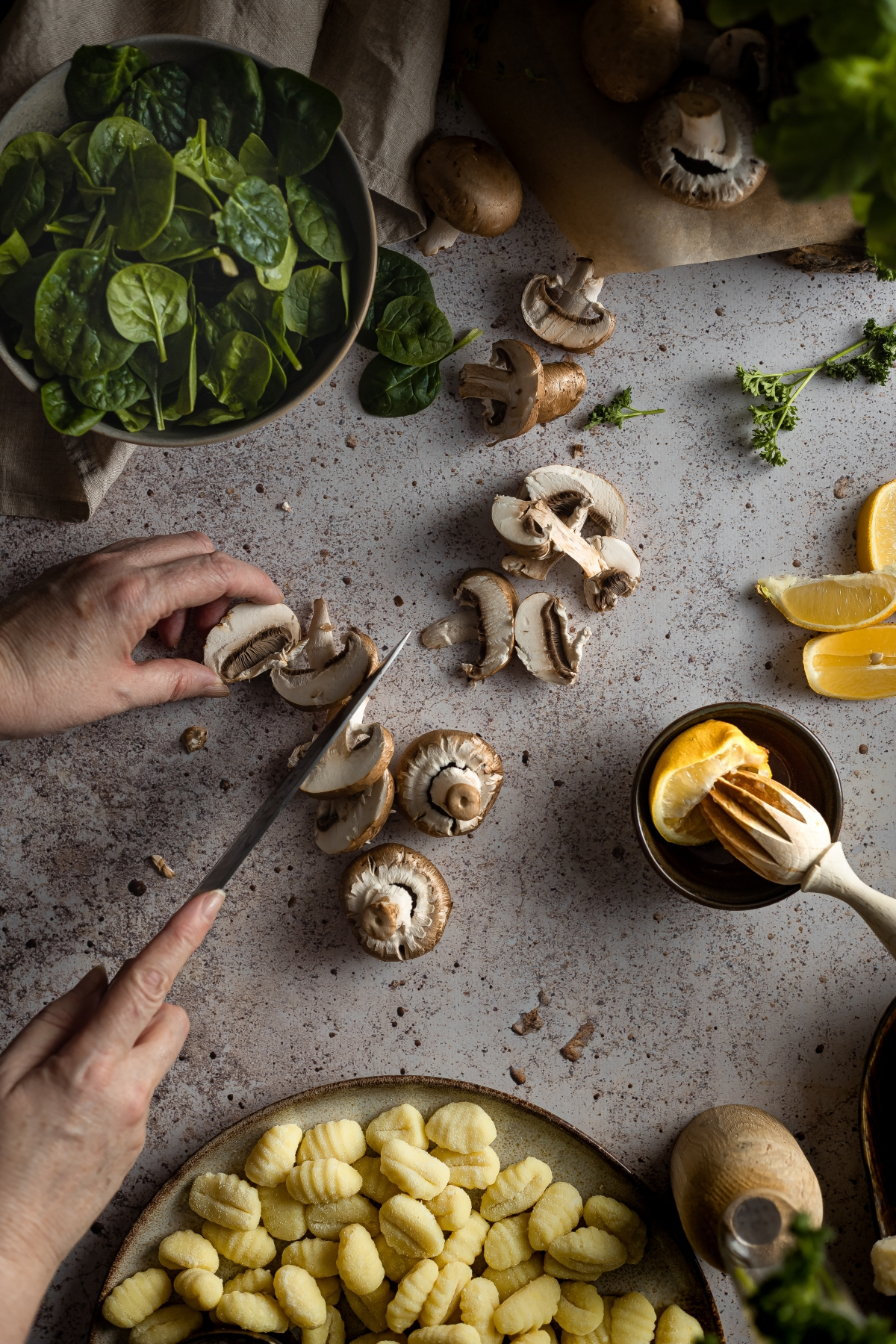
A Final Word on Sourcing and Sanity
When you’re buying produce, it’s good to be smart about your budget. Some veggies, like spinach, tend to have more pesticide residue. Looking up the “Dirty Dozen” and “Clean Fifteen” lists from the Environmental Working Group (EWG) is a great way to know when it’s worth spending a little extra for organic.
And finally, a quick but important heads-up: I’m a food professional, not a doctor. This is general advice from my experience in the kitchen. If you have a specific health condition like kidney disease or a serious food allergy, you absolutely must talk to a registered dietitian or your doctor for personalized advice. Knowing when to call in a specialist is a sign of wisdom, especially when it comes to your health.
Your mission this week: Just add a cup of frozen peas to one meal you already make—pasta, soup, rice, whatever. It’s the easiest protein boost ever. Let me know what you put them in!
Inspirational Gallery
Tofu: Made from pressed soybean curds, it has a mild taste that acts like a sponge for marinades and sauces. Ideal for scrambles, stir-fries, or blending into creamy desserts.
Tempeh: Made from whole, fermented soybeans, it has a firm, chewy texture and a distinct nutty, mushroom-like flavor. It holds up brilliantly to grilling or being sliced for sandwiches.
For maximum versatility, start with extra-firm tofu. For a hearty, savory bite, tempeh is your go-to.
Did you know? One cup of cooked lentils provides about 18 grams of protein and 16 grams of fiber—that’s more than 50% of your daily fiber needs.
This powerful combination is what makes legumes so satisfying. The protein builds muscle and keeps you full, while the fiber aids digestion and stabilizes blood sugar, preventing the energy crash you might get from less balanced meals.
Tired of mushy, bland lentils? The fix is often in the finishing touches. Once your lentils are cooked and tender, stir in a splash of something acidic. A squeeze of fresh lemon juice or a dash of red wine vinegar doesn’t just add brightness; the acid helps the lentils firm up slightly and makes their earthy flavor pop. It’s a tiny step that makes a world of difference.
How do I get that amazing crispy texture on my roasted vegetables and chickpeas?
The secret is twofold: make sure they are bone dry and don’t crowd the pan. Pat your veggies or chickpeas thoroughly with a paper towel before tossing them with oil and spices. Then, spread them in a single layer on your baking sheet with plenty of space in between. This allows the hot air to circulate and roast them, rather than steam them, giving you that irresistible golden-brown crunch.
- Boosts nutrient absorption.
- Improves digestibility and reduces bloating.
- Adds a fresh, crunchy texture to salads and sandwiches.
The trick? Sprouting your own legumes. It’s incredibly simple: soak lentils or mung beans overnight, drain, and keep them in a colander, rinsing twice a day. In just 2-3 days, you’ll have a batch of fresh, living sprouts ready to eat.
Important tip for flavor: Don’t underestimate the power of umami to make plant-based dishes deeply satisfying. To replicate the savory richness often associated with meat, lean on ingredients like miso paste, tamari, and nutritional yeast. A teaspoon of white miso whisked into a salad dressing or a sprinkle of Bragg Nutritional Yeast over roasted broccoli adds a complex, savory depth that transforms a simple meal.
Globally, pulses like lentils and chickpeas have a water footprint that is, on average, 18 times lower than that of beef per gram of protein.
To build a truly satisfying plant-based meal, think beyond just one source of protein. Layering them creates a more complex flavor and texture profile. For example:
- Start with a base of quinoa (a complete protein itself).
- Add a scoop of savory black beans.
- Top with a sprinkle of toasted pumpkin seeds or slivered almonds for crunch and healthy fats.
This approach ensures a meal that is not only nutritionally robust but also far more interesting to eat.










